Todmorden Station
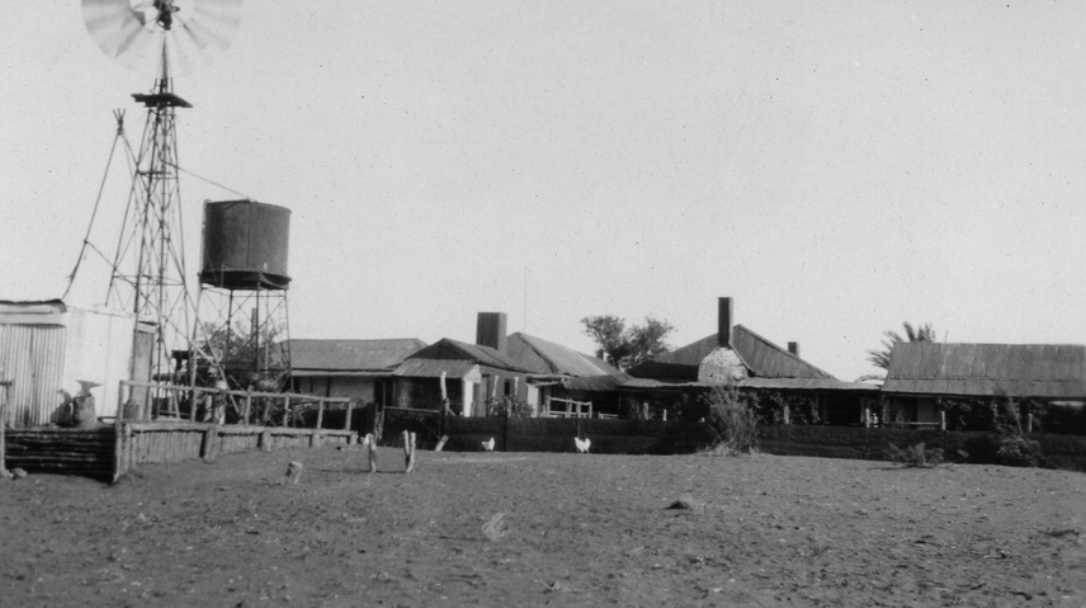
From Waler Data Base @ Facebook. Image: Todmorden homestead, State Library S.A. Much admired, visited and written up, built from scratch by Joe Breaden.
Some horse photos from Todmorden station (also known in earlier times as Mount Todmorden), north east of Oodnadatta and not far from the N.T. Border in South Australia. Owned by one of the great Waler breeders, J.A. Breaden.
Todmorden, 80 miles from the Territory border and 70 from Oodnadatta in the far north of South Australia, was bought by Joe Breaden in 1902, along with Henbury. It was a strategic buy as rail had gone through to Oodnadatta, so cattle could be walked to a railhead from what had been very remote country.
There was no permanent water on Todmorden when he took it up, but born in the Centre in 1859, Joe was a good bushman and great diviner. He put in many wells.
He was one of the best horse breeders in the country. He bred the types wanted in India, and for work here. His horses often topped sale prices and several India traders bought directly from him. He ran cattle too. Joe also guided an exploration in W.A. and was written up in the subsequent book “Spinifex and Sand”, a classic.
Ben Walkington, another legend of the outback, for some time was horse-breaker for Breaden on Todmorden, also droved big mobs of horses hundreds of miles; and cattle. Ben later got his own run, Evelyn Downs Station.
Joe Breaden set this station up superbly, installing many vital water points. He had men working around the clock in shifts – night and day – pumping water for his horses at outstations. Eventually mechanised methods made watering easier.
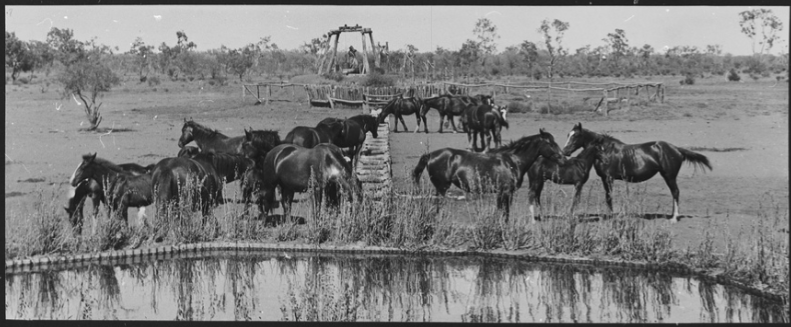
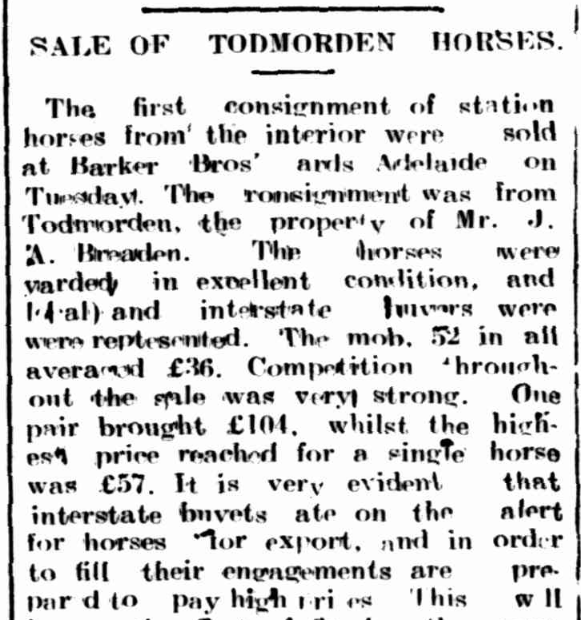
Image: Kapunda Herald, 13th August, 1909
Joe often topped the sales with his cattle and horses. The Todmorden horses were keenly looked for in India and always got big prices.
Some mobs were also bought from the station and taken down to the Eyre Peninsula, sold for working horses. Ben Walkington, another great character of the era who also eventually owned his own station, Evelyn Downs, overlanded a big mob of Todmorden horses down to Kimba, he’d also overlanded Erldunda and other excellent horses to the peninsula, railheads and to sales. Several noted horsemen at times worked on Todmorden.
Joe used a mix of staying TB (he enjoyed the Oodnadatta races and often had a runner there) and draught to develop his horses.
In 1907 150 were sent to the sales and got top prices; big mobs sent every year to the sales, sometimes to several sales in a year. At the time the price for a good strong young horse was 19 pounds. Many Todmorden and Henbury horses went to WW1. Sales continues all throughout the war; 143 in August 1917 etc etc. Many of these horses also went to India over the war.
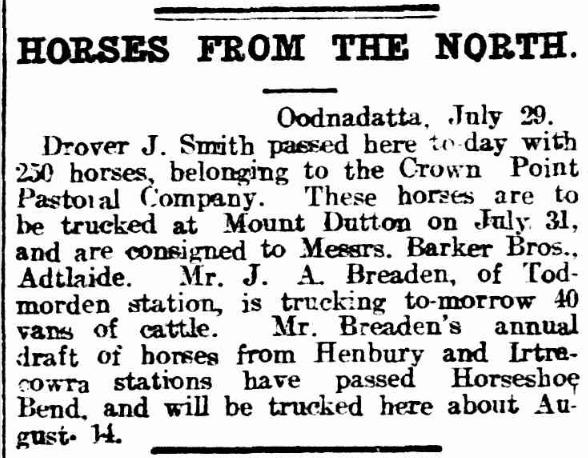
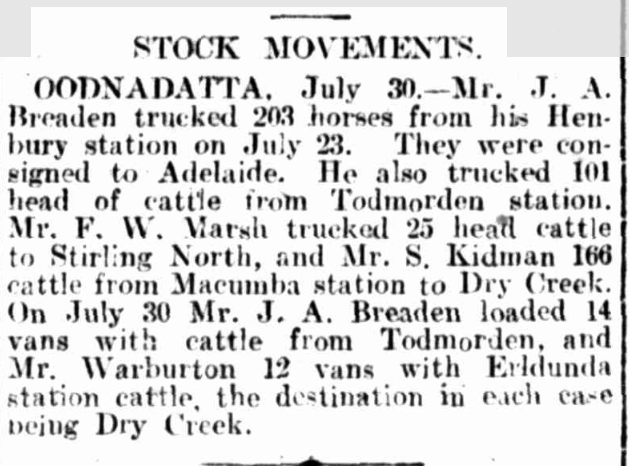
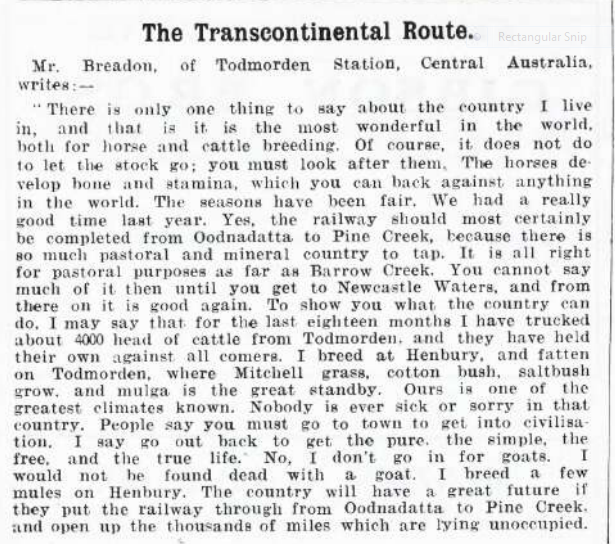
Seeing people frequently as they tended the water points etc kept the horses quiet, plus Joe wouldn’t keep a horse that wasn’t; they were known for a very good temperament.
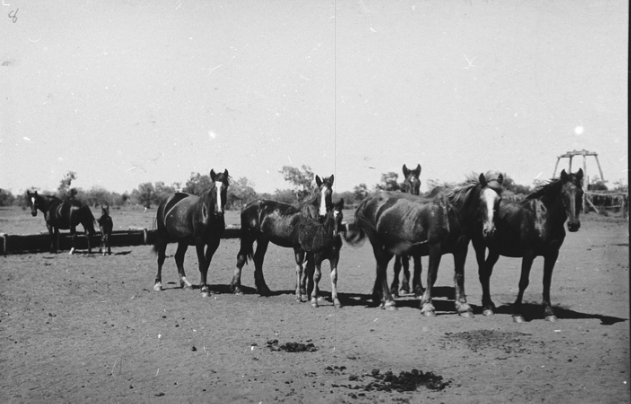
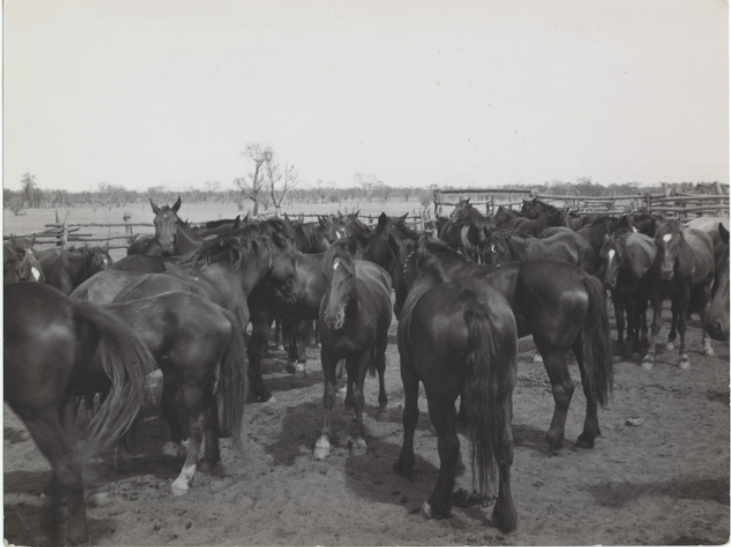
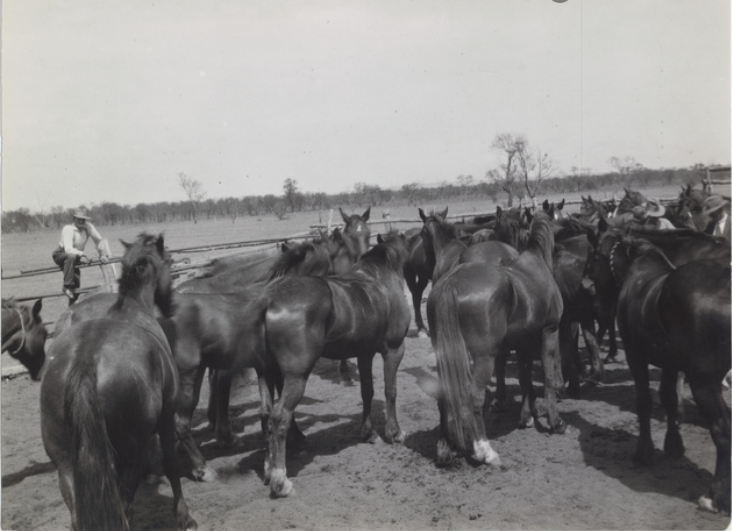
Images: View of horses in a paddock at Todmorden Station, South Australia. From photographs of South Australian scenes collected by Harry Peters (Arthur Henry Peters), Director of Lands during Sir Thomas Playford’s time as Premier… C. 1938. State Library S.A.
Image: Register, 18th March 1924
Joe, 1859-1924, was born and raised in the far north of South Australia. He worked all his life in the bush with cattle and horses on different stations,
Joe also went on the Carnegie expedition as 2 IC with his worker, Warri, which was written up in the book “Spinifex and Sand”, where he was praised as one of nature’s true gentlemen.
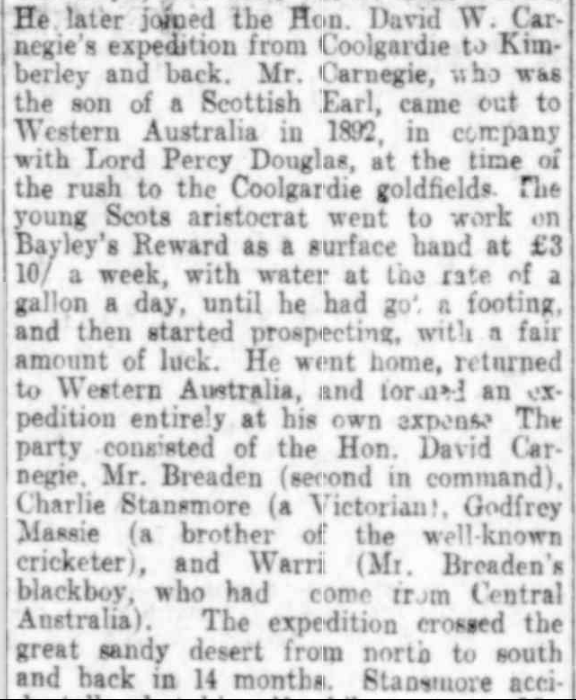
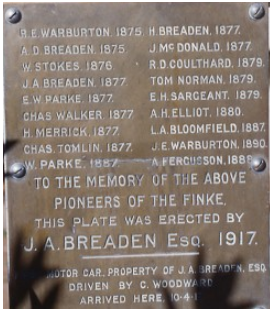
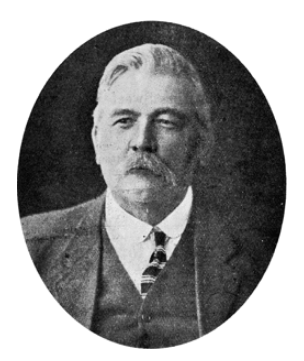
Images: Warburton, Coulthard, Breaden – some of, if not the greatest names in Waler breeders!
Yes, my bias is showing, ha. Wikitree photo. Joe (Joseph Albert) Breaden. Pastoral Review, 15 April 1924.
Group photograph of ‘Pastoral Pioneers’ with their name, property, age and number of ‘years in North, thus ( _ )’. Back row (from left): Willie Dawes – Topar. Age 63 (45); Bob Coulthard – Tempe Downs. Age 68 (44); Joe Breaden – Todmorden & Henbury. Age 66 (48); Willie Wade – Panaramitee. Age 67 (60); Norman Richardson – Port Augusta West. Age 67 (51); W.G. Pryor – Saltia. Age 71 (48); John Murray – Yalata & Wallelberdina. Age 74 (56). Front row: Charlie Hirsch – Leighs Creek. Age 65 (50); Lachlan McTaggart – Wooltana. Age 69 (61); John Conrick – Nappa Merrie. Age 71 (52); Neil McGilp – Moolawatana. Age 79 (51); George Murray – Yalata. Age 72 (55); Tom Hogarth – Strangways Springs. Age 73 (41); Willie Ferguson – Baratta & Moolooloo. Age 73 (55).’ State Library S.A.
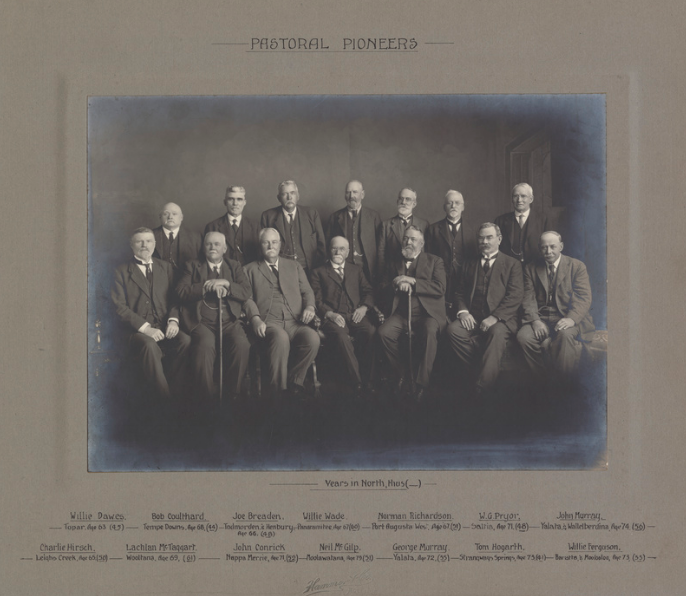
Opened up Glen Helen station with his brother Allen, among other jobs; managed Macumba etc. Drought, floods, isolation were all part of Joe’s life.
When the pastoral company he worked for went out of business, Joe tried a few things but was soon left with only one shilling. He went to Adelaide to see someone connected with stations and asked for a job – being offered the management of Todmorden, then consisting of one wurly and one well. He took the job – his Aboriginal worker Warri was one major reason, the owner told Joe, as Warri was so reliable.
Joe improved Todmorden out of sight including building a substantial house. When the owner died Joe was offered the station to buy. He went in partnership to buy it, eventually able to buy his partner out. He also bought Henbury.
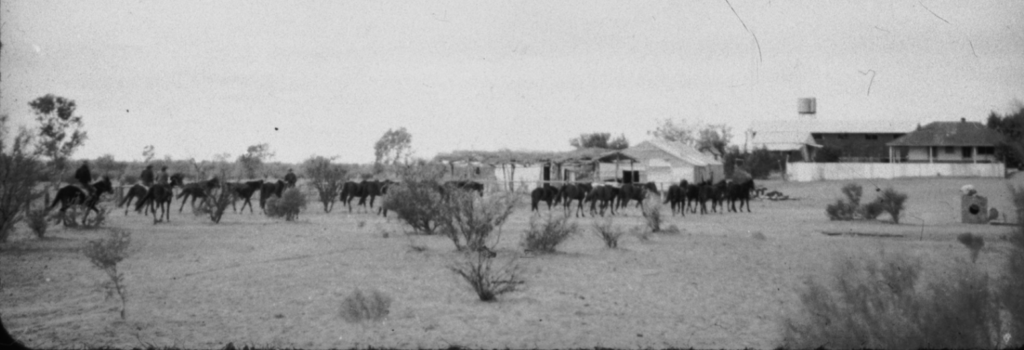
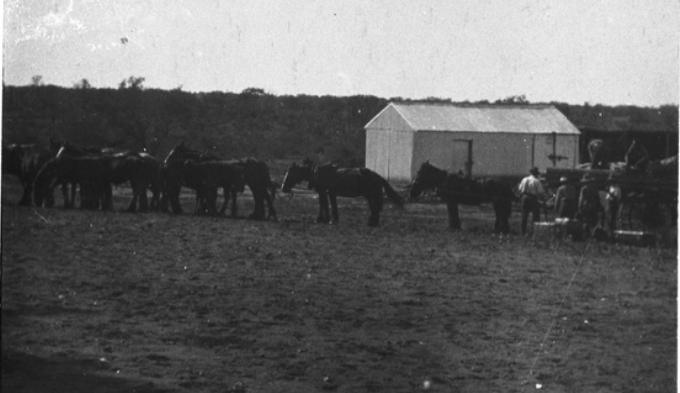
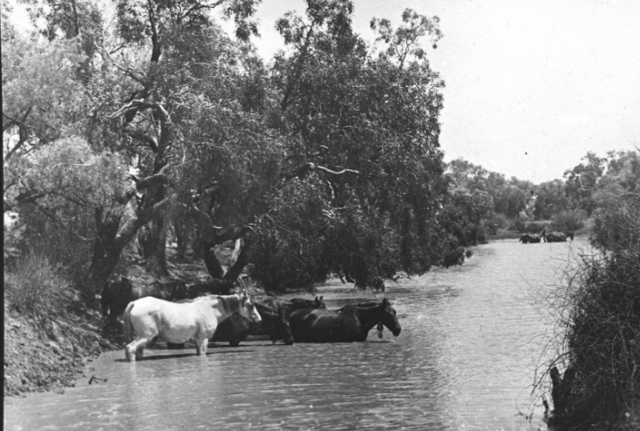
Images: Horse wagon at the homestead’s blacksmith shop at Mount Todmorden. C. 1908 State Library S.A. Angle Pole, Todmorden, Mount. C. 1908. State Library S.A.
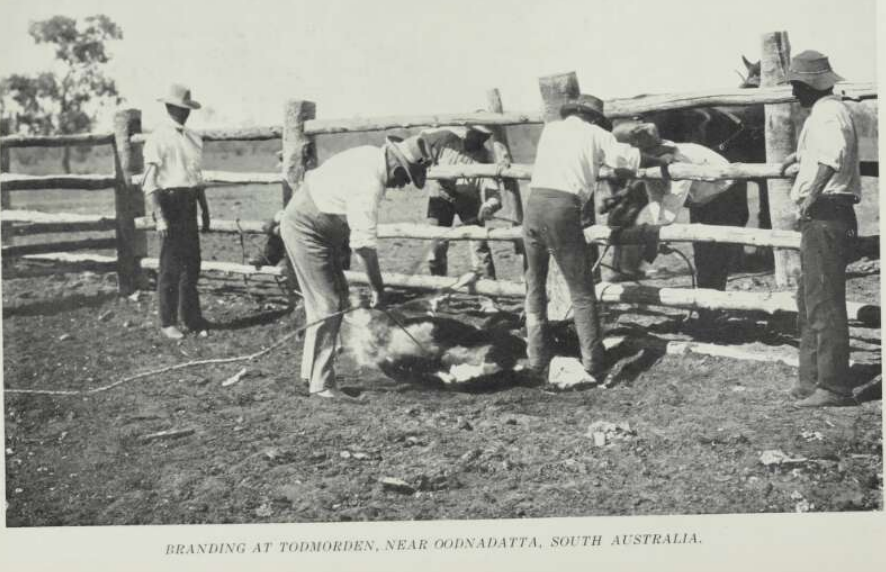

Image: Mollie Breaden, Herald (Melbourne) 18th September 1948
Joe married and had three daughters, one, Mollie, born and raised on Todmorden, stayed there all her life, running it after her father died. She often lamented she had little time for riding – once she rode all over the vast station with her Dad – as there was so much to do running the place. Mollie – who’d been in the field with mobile Red Cross 1939-47 – took over as manager, her horse plant (for a muster) usually 60 to 100 horses.
Mollie did an outstanding job on Todmorden, improving the homesteads and buildings, and importantly windmills, bores, wells, fences and other infrastructure. She bred Herefords. Joe had bred Herefords and Shorthorns (sometimes called Durham cattle then), all horned cattle. They had over 300 miles to range over, and horned cattle will go further for feed, feeling safe because of their natural armoury.
Joe had been unwell and moved to family in Glenelg. He recovered for a few months, then went downhill again and died in 1924. While in Adelaide his favorite thing was going to the cattle and horse sales.
Top fellow indeed, highly esteemed by all he met; and a great horseman, one of those which gained the Waler its great reputation.
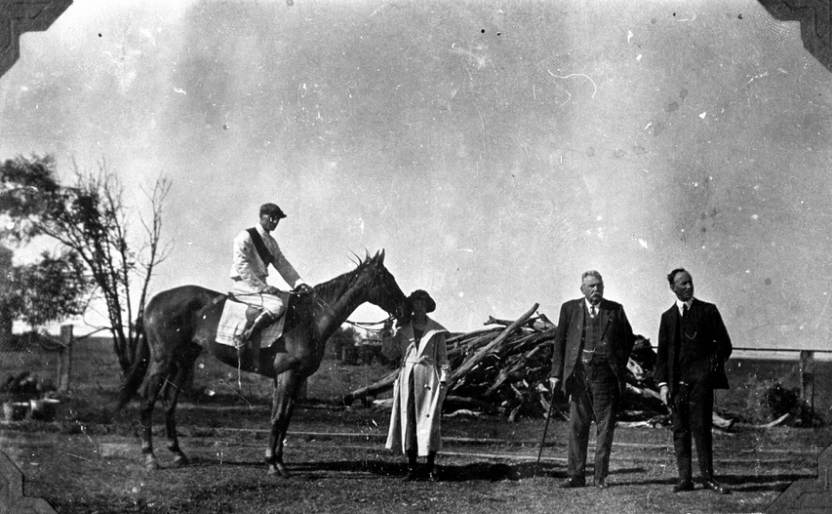
Post inspired by Debi, who has a couple of copies from pages of the Todmorden horse book. The horse breeding stations kept very comprehensive horse books, hopefully those remaining in existence will be copied to keep these precious old records safe, and copies put in archives, just ask a local library or see instructions on Trove, archives online – loading to Flickr eventually sees them make it to archives.
Please be aware that in the photo below there are images of Aboriginal people of the past who would be deceased now, which may cause some people distress.
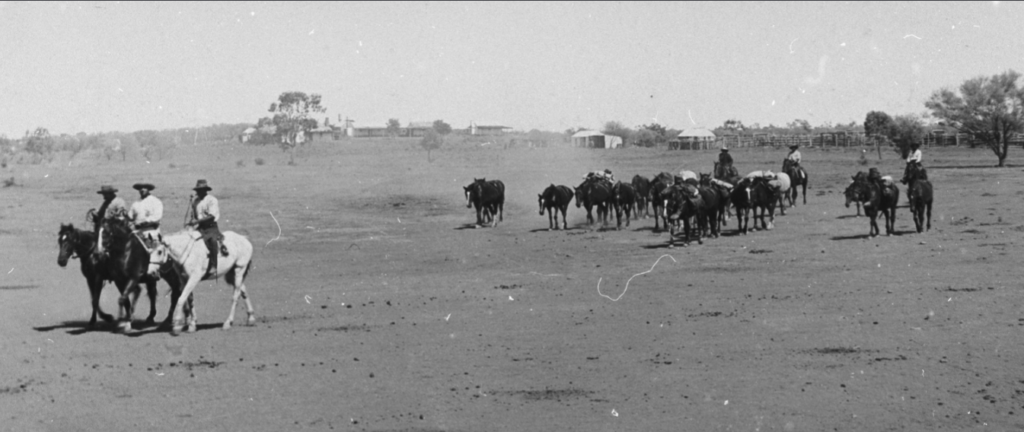
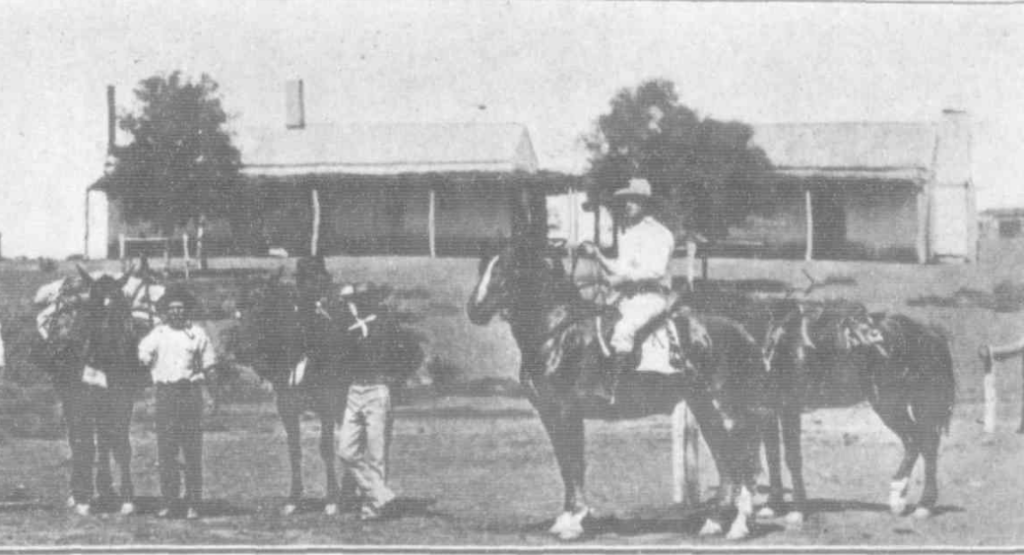
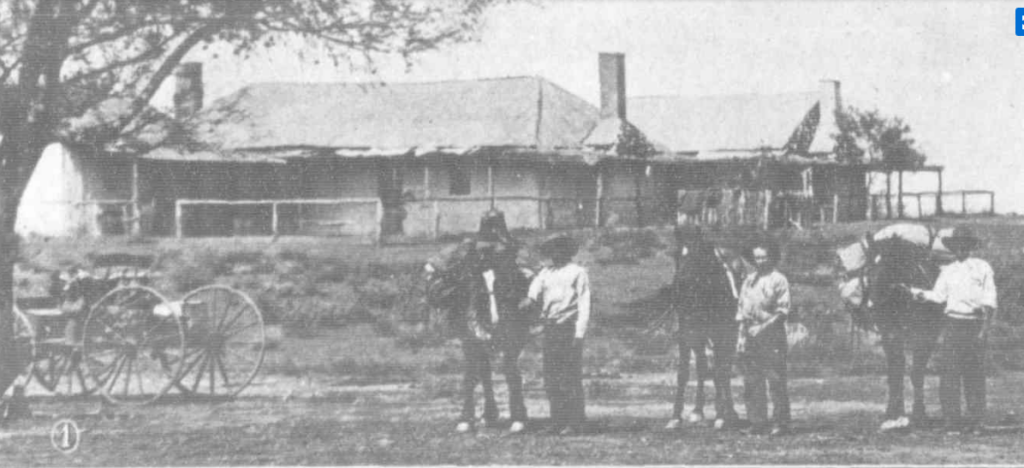
Images: Mustering party on Todmorden, Chronicle (Adelaide) 20th June 1908
